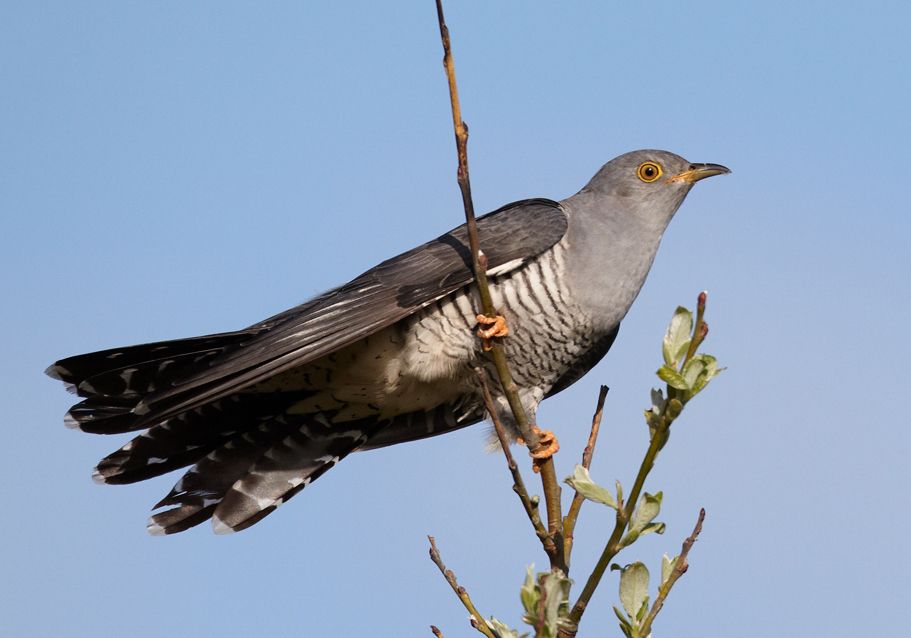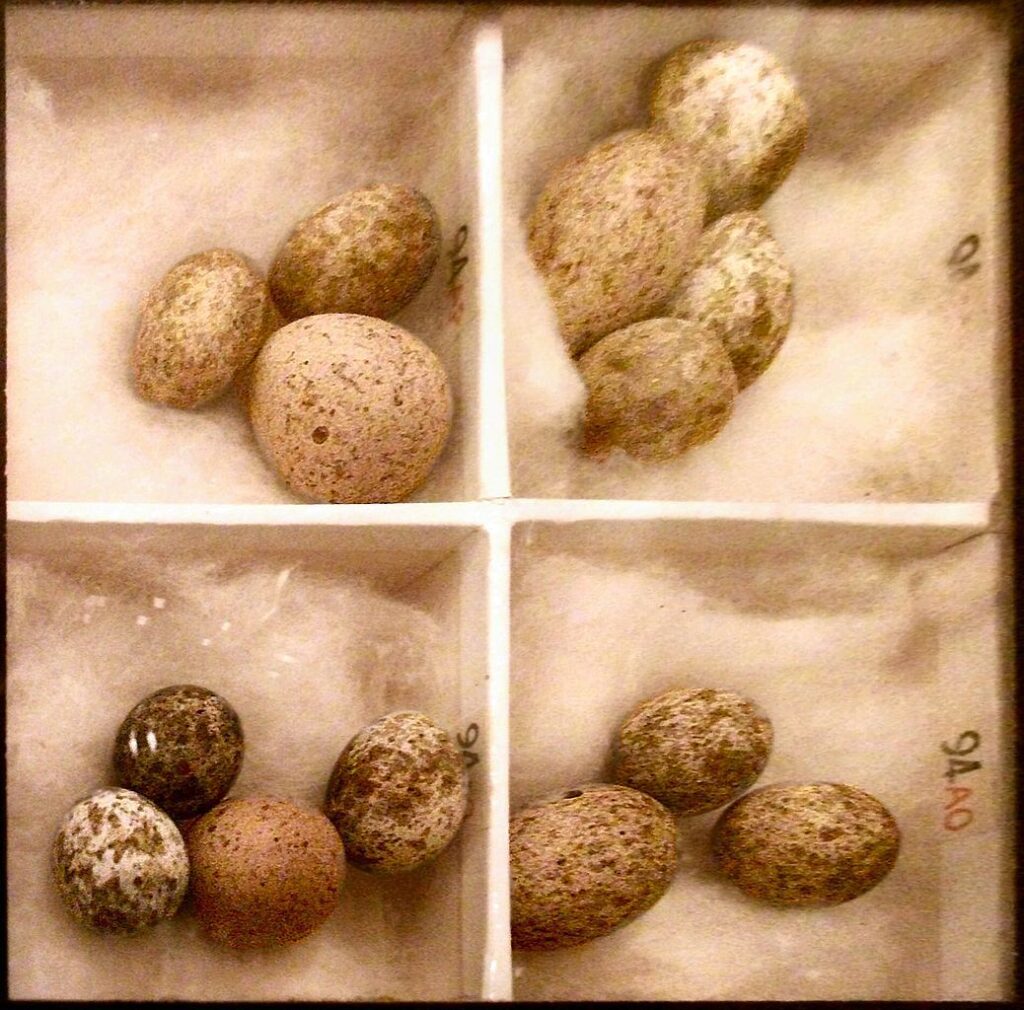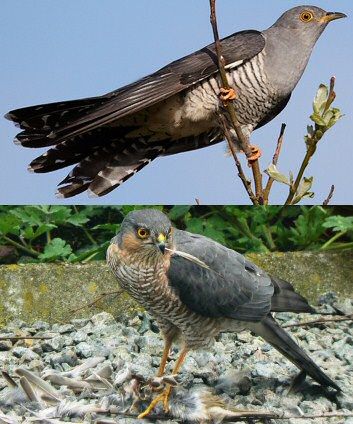
As a brood parasite, the common cuckoo (Cuculus canorus) gets away with laying its eggs in other birds’ nests because it’s larger and uses mimicry to fool its hosts.
Our own brood parasite, the brown-headed cowbird, uses stealth to dump her eggs but a female cuckoo doesn’t have to be sneaky. She looks like a sparrowhawk, the Eurasian version of our sharp-shinned hawk, so naive songbirds scatter when she shows up.
Also, her eggs closely mimic those of her favorite hosts: dunnocks, meadow pipits, and reed warblers. Here are four clutches of reed warbler eggs with a single cuckoo egg laid in each. The cuckoo egg is quite similar though larger. (Check yesterday’s blog for photos of a reed warbler and meadow pipit feeding cuckoo chicks.)

While the cuckoo mimics features of other birds we mimic him. Here’s a real cuckoo calling…
… and our mimicry of the cuckoo in a Black Forest cuckoo clock.
Cuckoo mimicry back and forth.
(photos from Wikimedia Commons; click on the captions to see the original)

Cuckoo is a lazy and intelligent bird indeed, and it’s crazy to lay eggs in another bird’s nest. Well, how can this bird do this